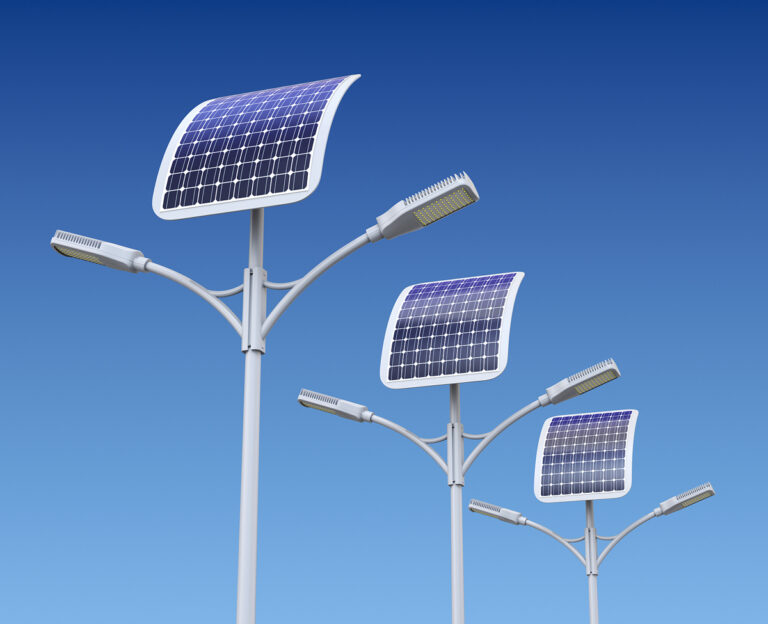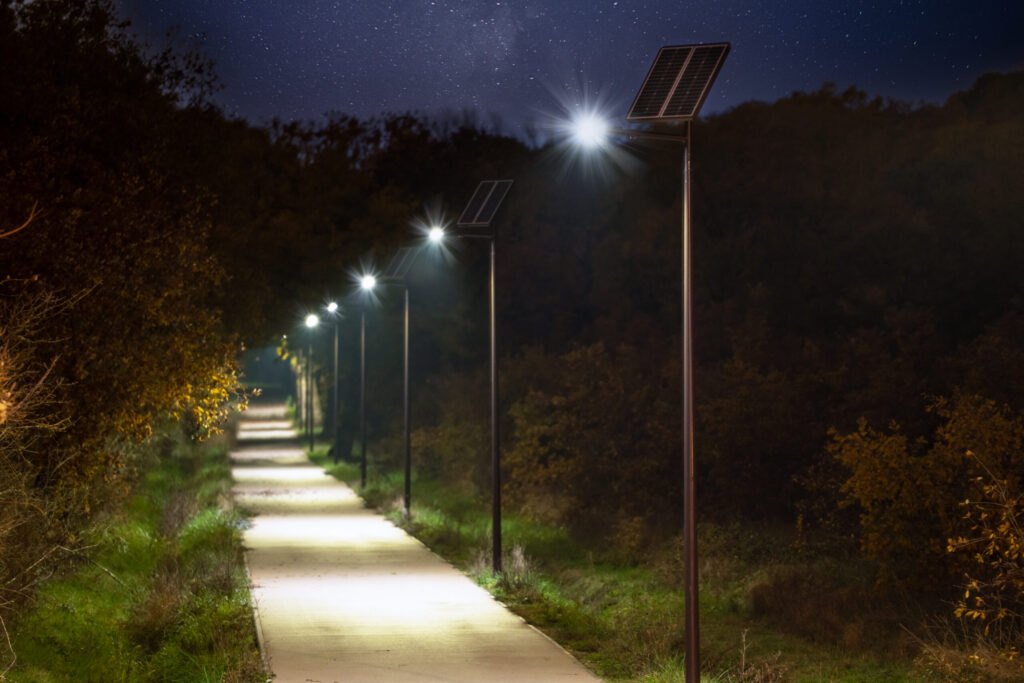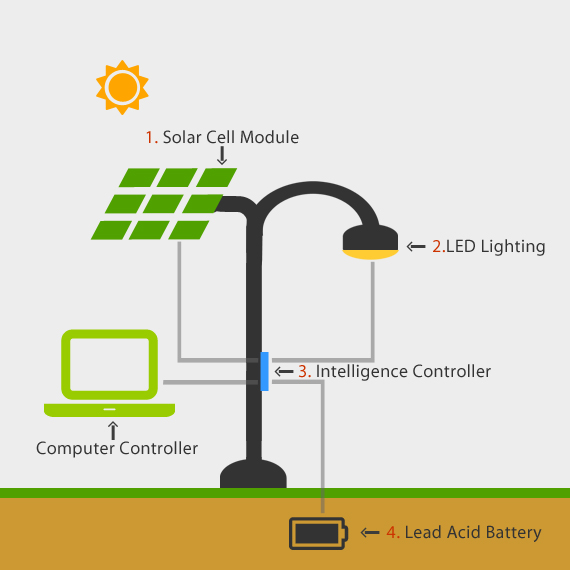SOLAR STREET PUMP

Key Components of Solar Street Lights:
Solar Panels: Solar street lights are equipped with photovoltaic panels that capture sunlight during the day. These panels convert solar energy into electrical power, which is stored in batteries for nighttime use.
Battery Storage: Solar street lights typically include rechargeable batteries to store excess energy generated during the day. These batteries ensure a continuous power supply during periods of low sunlight or at night.
LED Fixtures: Light-emitting diodes (LEDs) are used as the light source in solar street lights. LEDs are energy-efficient, have a longer lifespan, and provide bright illumination with minimal power consumption.
Controller: A controller manages the charging and discharging of the batteries, ensuring optimal energy management and system efficiency. It may also include features such as light sensors for automatic on/off functionality.
Pole: The light fixtures and solar panels are mounted on a pole, providing the necessary height for effective illumination. The pole is designed to withstand environmental conditions and support the weight of the solar components.


Advantages of Solar Street Lights:
Energy Efficiency: Solar street lights use LED technology, which is highly energy-efficient and consumes significantly less power than traditional lighting technologies, such as incandescent or fluorescent bulbs.
Renewable Energy Source: Solar street lights rely on solar energy, a renewable and sustainable resource. This reduces dependence on conventional electricity sources and lowers the carbon footprint associated with outdoor lighting.
Cost Savings: Once installed, solar street lights have minimal operating costs since they harness energy from the sun. This can lead to substantial cost savings over time compared to traditional grid-connected street lighting.
Environmentally Friendly: Solar street lights contribute to environmental conservation by reducing greenhouse gas emissions and minimizing light pollution. They operate without using fossil fuels, making them a cleaner and more sustainable lighting option.
Independence from Grid Power: Solar street lights operate independently of the electrical grid, making them suitable for use in remote or off-grid locations. This independence ensures consistent lighting even during power outages.
Easy Installation: Solar street lights are relatively easy to install and do not require extensive electrical infrastructure. This makes them a practical solution for both urban and rural areas.
Low Maintenance: With fewer components and no reliance on external power sources, solar street lights generally have lower maintenance requirements compared to traditional street lights.
Automatic Operation: Many solar street lights come equipped with sensors that enable automatic on/off functionality based on ambient light levels. This feature enhances energy efficiency by ensuring lights are only active when needed.
Community Safety: Well-lit streets contribute to improved safety in communities by reducing the risk of accidents, crime, and other incidents. Solar street lights enhance visibility and security in public spaces.
